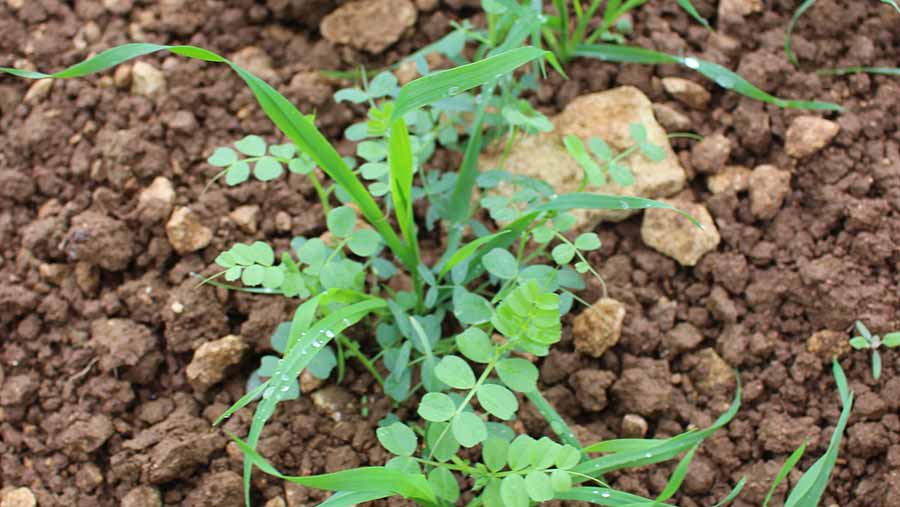Trial results show cover crops can beat blackgrass
 RBI copyright
RBI copyright Results from the second full season of Agrovista trials confirm a spring wheat-based system can successfully bring heavily blackgrass-infested land back into productivity.
A combination of spring cropping and cover crops enabled the agronomy company to produce a viable crop of spring wheat in 2014, yielding more than 10t/ha on heavy land in Northamptonshire.
Blackgrass counts were just four heads/sq m in the same field where untreated areas had more than 2,000 heads/sq m.
See also: Get up to 1t/ha extra OSR yield with clover companion crop
The trials site has a severe resistant-blackgrass problem, with pre-emergence residuals plus Avadex (tri-allate) only giving 40-50% control and the post-emergence application giving little control.
Therefore, chemistry was not going to offer a solution. Steward Woodhead, technical manager at Agrovista, told a grower meeting last week when considering alternative approaches, spring cropping had shown the most consistent results in reducing blackgrass populations.
“But drilling on heavy soil [like that at the site] in spring can be a real challenge. So how can you increase success using cover crops?”
To address this, Agrovista has developed a cover cropping system aimed at drying out soil and improving soil structure to enable spring drilling. This is based on black oat plus either vetch (environmental focus area-compliant) or black oat plus berseem clover.
Spring wheat is then drilled using a direct drill, as minimising soil disturbance is crucial to avoid encouraging further germination of the weed seed, he explained.
When looking at costs, Mr Woodhead said the nutrient capture over the winter by the cover crop, equating to about 40kg of N/ha, more or less covered the cost of the cover crop.
Read more about the cover crop mixes used and trial results

